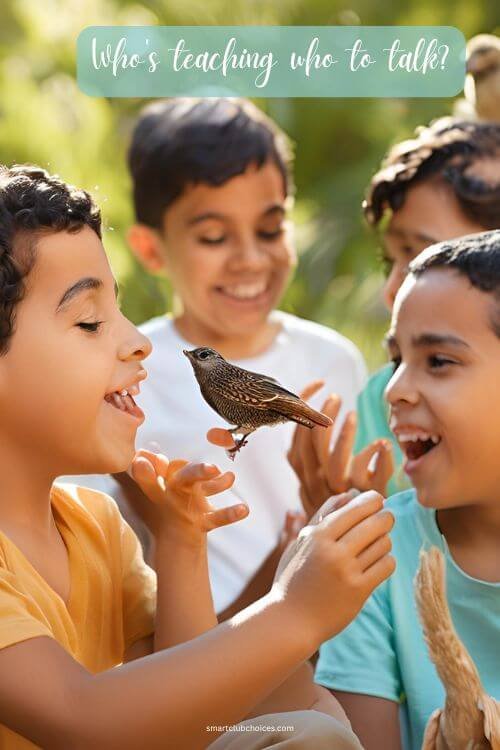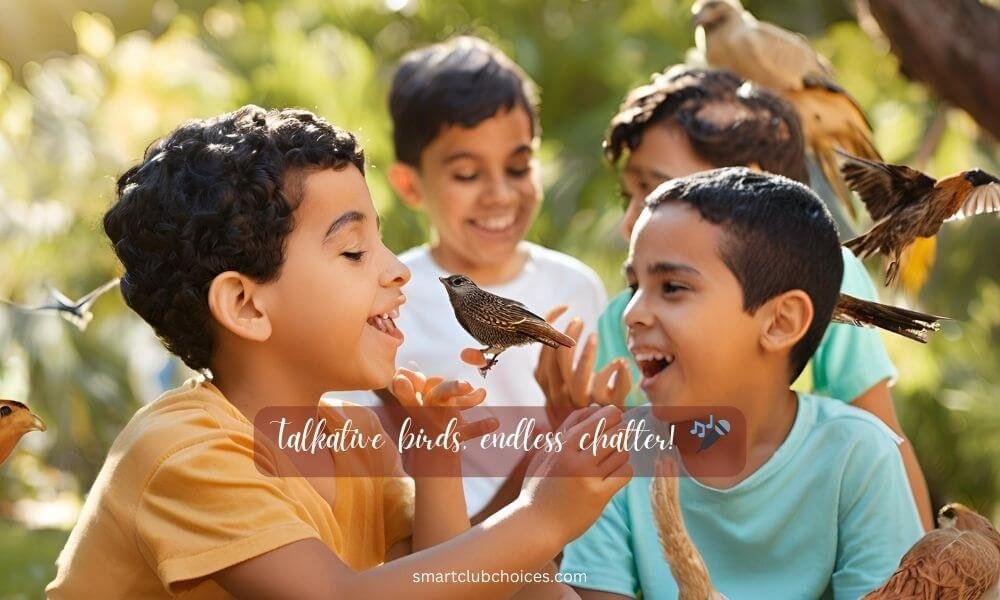How to Train Your Bird to Talk: Tips and Tricks
So, you’ve got a bird, and you’re dreaming of the day they’ll greet you with a cheerful “Hello!” or serenade you with a catchy tune. But let’s be real—training a bird to talk isn’t as simple as pressing play on a parrot podcast. It takes patience, consistency, and a whole lot of treats.
But don’t worry, we’ve got your back. In this guide, we’ll walk you through everything you need to know to turn your feathered friend into a chatterbox. From choosing the right bird to mastering the art of repetition, we’ve got you covered. Let’s get those vocal cords warmed up!
Table of Contents
(1) Choosing the Right Bird
Why Some Birds Talk Better Than Others
Not all birds are natural talkers. Some species, like parrots and budgies, are more inclined to mimic human speech, while others, like finches and canaries, are better known for their singing.
Best Talking Birds for Beginners
- Budgies (Parakeets): Small, social, and great mimics.
- Cockatiels: Affectionate and can learn a few words or tunes.
- African Grey Parrots: The Einstein of the bird world—super smart and excellent talkers.
Pro Tip
If talking is a top priority, choose a species known for its mimicking abilities.
(2) Setting the Stage – Creating the Right Environment
Why Environment Matters
Birds are more likely to talk when they feel safe, happy, and stimulated. A stressed or bored bird won’t be in the mood for a chat.
How to Create a Talking-Friendly Environment
- Comfortable Cage: Make sure your bird has a spacious, clean cage with plenty of toys and perches.
- Quiet Space: Choose a quiet area for training sessions to minimize distractions.
- Social Interaction: Spend time talking to and playing with your bird every day.
Pro Tip
Birds are more likely to talk when they’re relaxed and happy, so keep the vibe positive.
(3) The Art of Repetition – Practice Makes Perfect
Why Repetition is Key
Birds learn to talk by hearing words and phrases repeated over and over. Think of it as their version of language class.
How to Use Repetition Effectively
- Start Simple: Begin with easy, one-syllable words like “hello” or “hi.”
- Be Consistent: Use the same word or phrase consistently during training sessions.
- Short Sessions: Keep training sessions short (5-10 minutes) to avoid overwhelming your bird.
Pro Tip
Use a cheerful, enthusiastic tone to make the words more appealing to your bird.
(4) Rewards and Encouragement – The Power of Positive Reinforcement
Why Rewards Work
Birds, like most animals, respond well to positive reinforcement. Rewards encourage them to repeat the desired behavior.
How to Use Rewards Effectively
- Treats: Offer a small, tasty treat (like a piece of fruit or a seed) when your bird mimics a word.
- Praise: Use verbal praise and gentle petting to show your bird they’ve done a good job.
- Consistency: Always reward your bird immediately after they mimic a word to reinforce the behavior.
Pro Tip
Use your bird’s favorite treats to make the reward even more motivating.
(5) Advanced Techniques – Taking It to the Next Level
Why Advanced Techniques Can Help
Once your bird has mastered a few basic words, you can start introducing more complex phrases and even songs.
How to Use Advanced Techniques
- Phrases: Start with short phrases like “good bird” or “pretty bird.”
- Songs: Play a simple tune or sing a song repeatedly for your bird to mimic.
- Context: Use words or phrases in context, like saying “hello” when you enter the room or “goodnight” before covering the cage.
Pro Tip
Be patient—some birds take longer to learn than others, and that’s okay.

(6) Conclusion: A Talking Bird is a Happy Bird
Training your bird to talk is a fun and rewarding experience that strengthens your bond and adds a little extra joy to your daily life. With patience, consistency, and a lot of love, you can turn your feathered friend into a chatterbox.
Remember, every bird is different, so take the time to understand your bird’s unique personality and learning style. And don’t forget to enjoy the journey—watching your bird learn and grow is one of the most rewarding experiences a bird parent can have. So, grab some treats, warm up those vocal cords, and get ready for some feathered conversations. After all, life is better with a little birdie banter!








